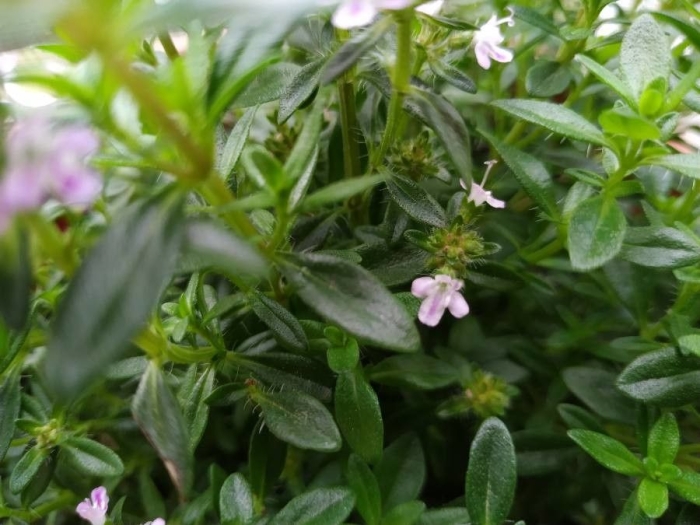Summer Savory
(Satureja hortensis)
Summer Savory (Satureja hortensis)
/
/

Di Vincenzo Ivan
CC BY-SA 4.0































Estimated Native Range
Summary
Summer Savory is valued for its culinary uses, as it is a popular seasoning for beans, meats, and a variety of dishes. It is less bitter than its relative, winter savory, making it more favored in cooking. In the garden, it can be used as a border plant or in herb gardens. Summer Savory thrives in full sun and requires low to medium amounts of water, preferring well-drained soils with a neutral to slightly alkaline pH. It can be grown from seed, which germinates slowly, and seedlings can be topped in early spring for fresh use. When in flower, the plants can be harvested and dried for winter use. While generally easy to maintain, it can suffer from root rot if overwatered or planted in poorly drained soils.CC BY-SA 4.0
Plant Description
- Plant Type: Herb
- Height: 1-1.5 feet
- Width: 0.5-1 feet
- Growth Rate: Moderate
- Flower Color: Pink
- Flowering Season: Summer
- Leaf Retention:
Growth Requirements
- Sun: Full Sun
- Water: Low, Medium
- Drainage: Medium, Fast
Common Uses
Bee Garden, Butterfly Garden, Deer Resistant, Drought Tolerant, Edible*Disclaimer: Easyscape's listed plant edibility is for informational use. Always verify the safety and proper identification of any plant before consumption., Fragrant, Low Maintenance, Potted Plant
Natural Habitat
Open, rocky habitats and scrublands in Central Asia, the Western Himalayas, and Southeastern Europe
Other Names
Common Names: Savory, Bohnenkraut, Ajedrea Común, Saborida, Savourée, Sarriette Des Jardins, Bonenkruid, Echt Bonenkruid, Sergurelha, Sommarkyndel, ČAber Sadovyj
Scientific Names: , Satureja hortensis, Satureja viminea, Satureja officinarum, Clinopodium hortense, Clinopodium pachyphyllum, Satureja altaica, Satureja brachiata, Satureja densiflora, Satureja filicaulis
GBIF Accepted Name: Satureja hortensis L.